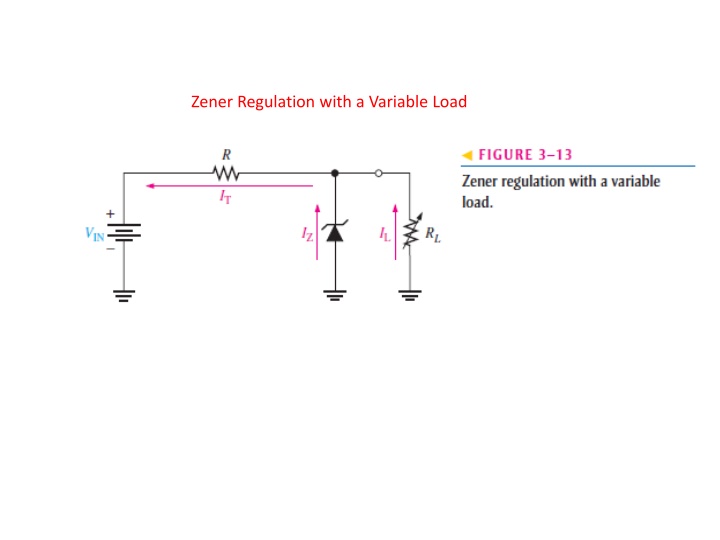
Zener Regulation, Zener Limiter, Varactor Diode, and Optical Diodes
Explore the concepts of Zener regulation with a variable load, Zener limiter, varactor diode, and optical diodes in electronics. Learn about their functions, applications, and semiconductor materials used. Dive into the world of optoelectronics and understand how these components enhance electronic circuits.
Download Presentation

Please find below an Image/Link to download the presentation.
The content on the website is provided AS IS for your information and personal use only. It may not be sold, licensed, or shared on other websites without obtaining consent from the author. If you encounter any issues during the download, it is possible that the publisher has removed the file from their server.
You are allowed to download the files provided on this website for personal or commercial use, subject to the condition that they are used lawfully. All files are the property of their respective owners.
The content on the website is provided AS IS for your information and personal use only. It may not be sold, licensed, or shared on other websites without obtaining consent from the author.
E N D
Presentation Transcript
33 THE VARACTOR DIODE A varactor is a diode that always operates in reverse bias and is doped to maximize the capacitance of the depletion region. The depletion region acts as a capacitor dielectric, The p and n regions are conductive and act as the capacitor plates. A major application of varactors is in tuning circuits. For example, VHF, UHF, and satellite receivers utilize varactors. Varactors are also used in cellular communications
34 OPTICAL DIODES Three types of optoelectronic devices are introduced: the light-emitting diode, quantum dots, and the photodiode. 3-4-1 The Light-Emitting Diode (LED) The basic operation of the light-emitting diode (LED) is as follows. When the device is forward-biased, electrons cross the pn junction from the n-type material and recombine with holes in the p-type material. The difference in energy between the electrons and the holes corresponds to the energy of visible light. When recombination takes place, the recombining electrons release energy in the form of photons. The emitted light tends to be monochromatic (one color) that depends on the band gap (and other factors).
LED Semiconductor Materials The semiconductor gallium arsenide (GaAs) was used in early LEDs and emits IR radiation, which is invisible. The first visible red LEDs were produced using gallium arsenide phosphide (GaAsP) on a GaAs substrate. The efficiency was increased using a gallium phosphide (GaP) substrate, resulting in brighter red LEDs and also allowing orange LEDs.
Applications of LEDs Standard LEDs are used for indicator lamps and readout displays on a wide variety of instruments, ranging from consumer appliances to scientific apparatus. A common type of display device using LEDs is the seven-segment display.
3-4-2 Quantum Dots Quantum dots are a form of nanocrystals that are made from semiconductor material such as silicon, germanium, cadmium sulfide, cadmium selenide, and indium phosphide. Quantum dots are only 1 nm to 12 nm in diameter. There are other promising applications, particularly in medical applications. Water-soluble quantum dots are used as a biochemical luminescent marker for cellular imaging and medical research. Research is also being done on quantum dots as the basic device units for information processing by manipulating two energy levels within the quantum dot.
3-4-3 Photodiode The photodiode is a device that operates in reverse bias, as shown in Figure 3 44(a), where I is the reverse light current. The photodiode has a small transparent window that allows light to strike the pn junction. Some typical photodiodes are shown in Figure 3 44(b). An alternate photodiode symbol is shown in Figure 3 44(c).
A photodiode differs from a rectifier diode in that when its pn junction is exposed to light, the reverse current increases with the light intensity. When there is no incident light, the reverse current, is almost negligible and is called the dark current
